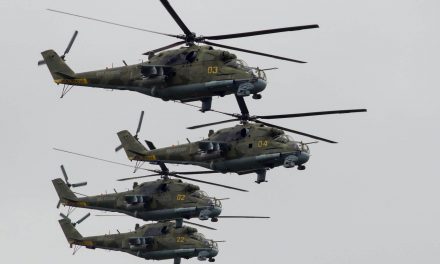The Christmas Truce of 1914 was a pause in World War I hostilities during the holiday season, an event unimaginable during WW2. On December 24, soldiers from Britain and Germany that were stationed along the Western Front spontaneously began to sing carols and exchange seasonal greetings across the trenches. In some places enemies even crossed only until Boxing day, after which the fighting resumed with renewed intensity.
How Did The Christmas Truce Occur?
An unknown individual set in motion a remarkable truce, which still stands today as an emblem of benevolence and mercy during wartime violence. On Christmas Eve 1914, servicemen from the British Expeditionary Force (BEF) caught wind of German soldiers singing carols and patriotic songs while small lanterns hung atop their trenches with little fir trees lined up alongside them. Communications between both sides were then exchanged through shouted messages across no man’s land.
Many of the servicemen wanted to meet in the middle, though their superiors were hesitant and warned against it.
In some places along the Western Front, soldiers from opposing sides did make their way into no man’s land on Christmas Day. They exchanged small presents, shared rations, and played football together – all activities that had been prohibited days before. In many instances, they even discussed what was happening at home and agreed to bury one another’s dead with respect. British officers even organized a service in honor of those who had been killed during the war.
However, the truce didn’t last long, as orders eventually came through for both sides to recommence hostilities. It was a brief interlude in an otherwise catastrophic conflict, but the spirit of compassion and camaraderie that emerged during the Christmas Truce of 1914 will live on in history forever. The truce serves as a reminder that humanity can prevail even in times of war.
Various memorial services are now held every year to commemorate this event. These services remember all those who lost their lives in World War I and honored the idea that peace is possible even in times of war. The Christmas Truce of 1914 stands as a reminder that people can find common ground, show compassion for one another, and overcome their differences to work toward peace.
The Christmas Truce of 1914 will remain an important part of history for many years to come. It serves as a reminder of humanity’s potential for peace and understanding, even in times of war. It is an example of how people can find common ground and show compassion for one another in the midst of conflict. It stands as a powerful symbol that peace is possible if we choose it over violence.
The Christmas Truce of 1914 will forever remain an iconic event in world history, reminding us all that despite our differences, humanity still has the capacity for mercy and understanding.
The Christmas Truce stands as a testament to the power of hope and goodwill at a time when both were hard to come by. In today’s turbulent world, where division seems ever-present, it is more important than ever to recall the spirit of peace and understanding that emerged in 1914. It is a reminder that even in dark times, hope can still be found if we choose to reach out and seek it.
The Christmas Truce of 1914 is a story of humanity’s capacity for love and compassion in the face of war. It is a powerful reminder that even during the darkest days, peace and understanding are possible if we choose violence over violence. Today, let us remember this momentous event and honor its legacy by striving to create peace between nations and people everywhere. Let us celebrate the power of goodwill, mercy, and understanding—for these values have stood the test of time throughout history.
What began as an individual effort to extend good cheer across enemy lines ultimately resulted in a phenomenon that still stands today as an undeniable symbol of peace and goodwill. Even after all these years, it continues to offer hope for a better world and a brighter future for us all.
The Christmas Truce remains a unique moment in time when enemies came together on the battlefield in peace instead of fighting each other with violence – something we should strive towards every day! Today, let’s remember this event and work together to try to create a future free of war and conflict. It all starts with small steps of kindness, understanding, and respect toward one another. Let’s make sure we don’t forget the lessons learned from that historic day in 1914!
Who Ordered the Christmas Truce To Be Over?
There were some incidents with casualties during the Christmas Truce. British troops had been ordered not to fraternize with the enemy, and reports of casualties caused by German troops firing at those troops who disobeyed orders led to outrage in Britain.
The Christmas Truce was an unofficial cease-fire initiated by soldiers from both sides, which allowed them a brief respite from fighting during World War I. Though it was initially welcomed by all involved, some authorities were quick to take action against this unapproved display of peace. Ultimately, the truce ended due to British Commander Sir John French issuing an order for
Tragically, Private Percy Huggins was relaxing in No Man’s Land during a Christmas Truce when he was fatally shot by a sniper. His sergeant stepped up to take his place and seek vengeance, yet was also killed moments later. This account of the failed truce serves as an unfortunate reminder that war can strike at any moment – even on holidays dedicated to peace.
During the Christmas Truce of World War I, one German soldier, in particular, scolded his fellow combatants with a reprimanding statement: “It is unacceptable for such an event to take place during wartime – have you no sense of German honor left?” That same 25-year-old individual was none other than Adolf Hitler himself.
His orders to cease the unofficial truce were echoed by German officers, who reprimanded their own troops and forced them back onto the battlefield.
Meanwhile, on the Allied side General Sir Horace Smith-Dorrien declared that any fraternization between opposing sides was punishable by “field punishment” or even death. The order spread quickly along both sides, ensuring that such spontaneous events of holiday cheer would never happen again.
Ultimately, it was Smith-Dorrien who issued the order to end the Christmas Truce of World War I, thus bringing an untimely conclusion to a remarkable moment in history. On December 25th, 1914, a time for celebration became a reminder that war knows no holiday. Despite this fact, both sides managed to come together in an act of goodwill and respect – if even for just one day. This remarkable event is still commemorated today as a testament to human resilience and courage during the darkest hours of conflict.













